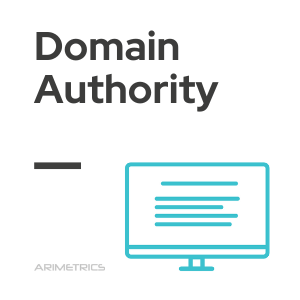
Definition:
Domain Authority (DA), or Domain Authority, is a metric developed by Moz that measures the authority of a website or domain as a whole. This numerical value, which ranges from 1 to 100, estimates the likelihood that a website will rank in search results. The higher the DA, the more likely the site is to perform well in search engines. It is important not to confuse DA with Page Authority (PA), which refers to the authority of a specific page within the site.
DA is calculated from multiple factors, including the quality and quantity of inbound links, content relevance and other technical aspects of SEO. In short, it reflects the influence of a website in the field of organic positioning, being a very relevant indicator to increase user traffic by improving visibility in search engines.
What is Domain Authority used for?
Domain Authority is a valuable metric for SEO professionals, as it helps to evaluate and improve a website’s visibility in search engines.
- Competitor analysis: Allows you to compare a website with that of its competitors. Knowing the DA of other sites competing for the same keywords helps to assess the difficulty of outperforming them in search results and adjust the SEO strategy accordingly.
- Planning SEO strategies: A high DA suggests that a site has good online authority, which can translate into better search engine rankings. Monitoring the DA allows you to identify areas for improvement and develop specific strategies to increase domain authority.
- Evaluating link opportunities: Knowing the DA of a website is useful in deciding with whom to collaborate or exchange links. Links from sites with a high DA are generally more valuable.
- Measuring SEO performance over time: The DA can serve as an indicator of the success of SEO strategies implemented. Monitoring changes in DA allows you to evaluate whether the actions taken are having a positive effect.
- Prioritization of digital marketing efforts: Understanding the authority of a domain allows for better prioritization of digital marketing efforts, focusing on tactics that help improve DA.
How to measure Domain Authority
There are several tools and methods for measuring Domain Authority, each offering different insights into the performance of a website.
- Moz Link Explorer: Tool developed by Moz, widely used to measure Domain Authority. It provides a detailed analysis of inbound links, keywords and other factors.
- MozBar: Free extension for browsers such as Chrome and Firefox that allows you to see the Domain Authority and Page Authority of any web page directly in the search results.
- SEMrush: Although it does not directly provide a Domain Authority metric, it offers tools that allow you to analyze the authority of a domain using its own scoring system.
- Ahrefs: Uses its own metric called Domain Rating (DR), which is comparable to DA, offering a comprehensive analysis of inbound and outbound links.
- Comprehensive SEO tools: There are other tools such as Majestic, which uses Trust Flow and Citation Flow to measure the authority of a website.
Strategies to improve Domain Authority
Improving Domain Authority requires a comprehensive approach, ranging from content creation to technical optimization of the website.
- Create high quality content: Publishing original, relevant and valuable content that responds to the needs of the audience is essential. Quality content attracts natural links from other sites.
- On-Page Optimization: Ensure that each page is optimized for SEO, including proper use of keywords, title tags, meta descriptions, headings and URL structure.
- Link Building: Develop a link building strategy to obtain backlinks from relevant and high authority websites.
- Improve site structure: A good site architecture facilitates navigation for users and crawling by search engines.
- Remove toxic links: Regularly review the site’s link profile and use tools to identify and remove toxic or low-quality links.
- Social media engagement: Promote content through social media to increase visibility and attract more inbound links.
- Improve user experience (UX): A user-friendly website with intuitive navigation and fast loading times not only retains visitors, but is also favored by search engines.
- Ongoing monitoring and analysis: Use analytics tools to monitor site performance and DA progress. Adjust strategies based on the data and results obtained.
